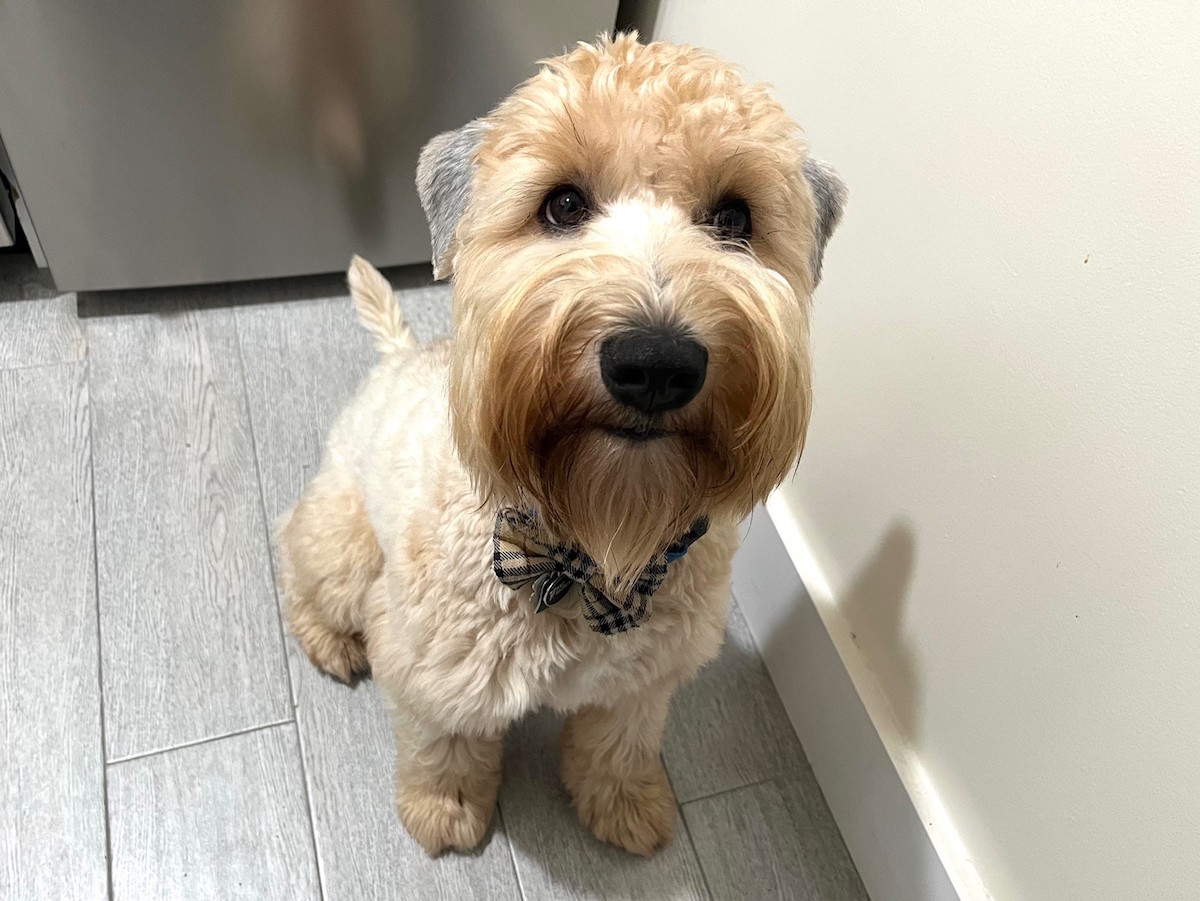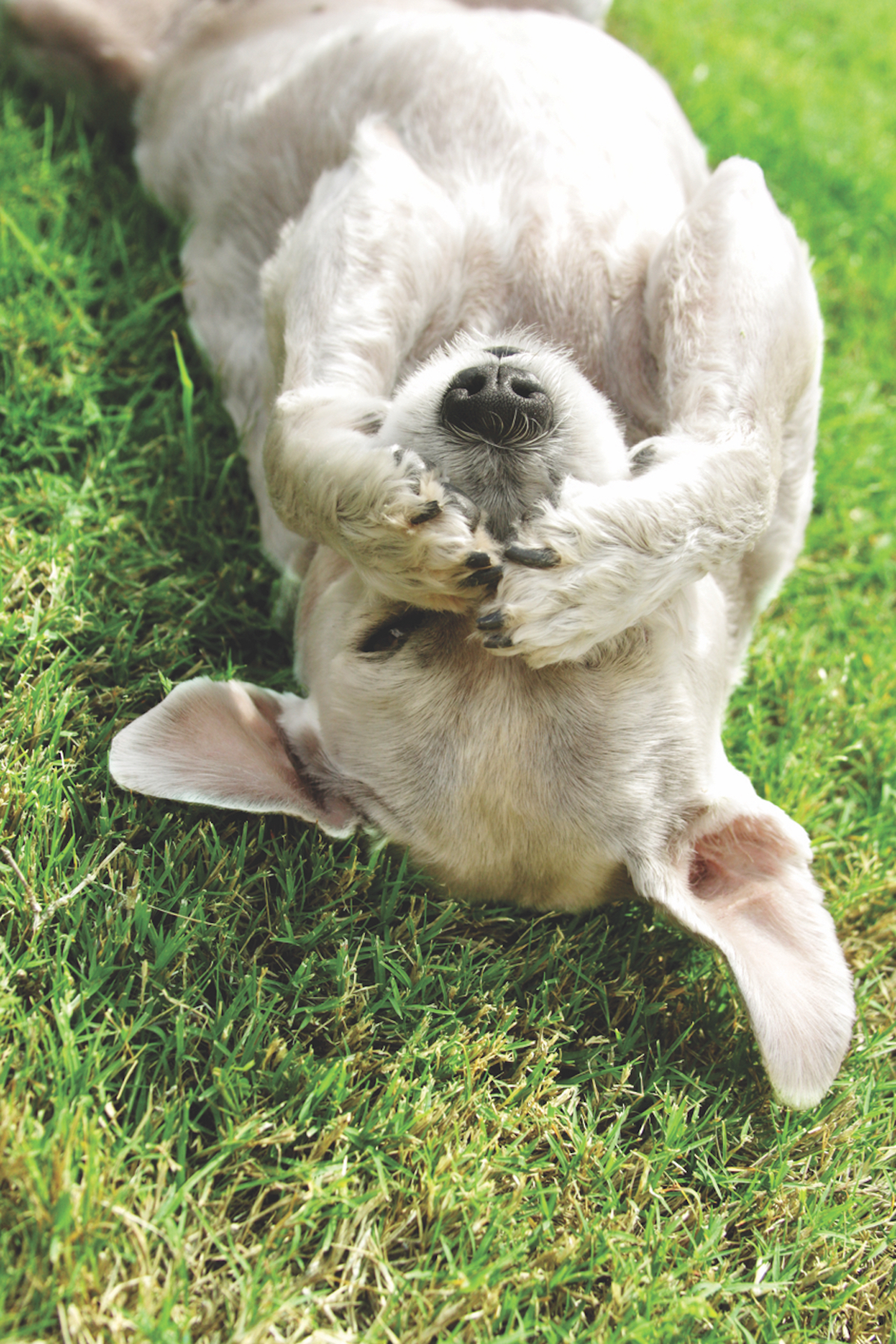By Dr. Parker T. Barker
My sister, Peanut, is a case-in-point about the trouble a dog can get into when they are bored. She has always had a ton of energy and if that doesn’t get used up, she manages to find a way to expend it on things like chewing the corners of tables or the braces of chair legs. She definitely has a “thing” for wood but has been known to enjoy a leather shoe on occasion. Me? I never caused problems when I was younger. Honest! Except for that time I was supposed to be good during a dinner party and somehow that giant piece of gorgeous lamb just happened to fall off the table….and then there was the incident with the 10 softballs that kind of got chewed up. But enough about me. We are here to talk about your dog and their boredom.
So how do you know if your dog is bored? Some of the standard behaviors to look for are excessive barking at random things, constantly staring at you, or he paws and nudges you. He is demanding attention because he is bored.
Preventing Your Dog from Getting Bored
Did you know you can entertain your dog? You can take your dog outside more often or take them for a run which is good for both of you. Or you can talk to your dog. Your dog will, believe it or not, appreciate the mental stimulation that goes into having a conversation with you – even if everybody else thinks it is kind of weird.
Different kinds of toys are also a good way to keep a dog occupied. There are puzzle toys that make it difficult for your dog to find the hidden treats. Preventing boredom isn’t just about physical exhaustion, it is also mental challenges.
Or make it a family affair. Playing games with your dog can be a fun, interactive way to provide mental and physical exercise for your dog. Try the “find it” game. Place your dog in a stay position (or have someone hold him briefly) while you or your child hides a treat or two inside the room (behind a table leg, under a door, beside a bookcase, etc.). Then, come back to your pup and release him with a command like “Go find it!” using an encouraging voice. If at first he doesn’t go for the treat, go near the hidden treat and continue to encourage with, “Go find it!” Once Fido gets the hang of it, you can hide treats in another room or even on a different floor of the house.
Staving off boredom can also be a great excuse to work on basic obedience commands like “sit, down, stay, and come.” Ever heard of a doggie push-up? Mom is big into going to the gym at the moment so this was her idea, not mine. She says use “Sit and Down” together for puppy push-ups. Have your kids use a stopwatch to see how many push-ups the dog can do in thirty seconds. Keep a chart to document improvement. You can also work on “Stay” in conjunction with the “Find It” game. Start with your dog doing a thirty-second stay and work up to a few minutes.
And I really believe in the benefit of a disciplined heel walk into your pup’s daily schedule. The disciplined heel walk is a key element to achieving a balanced dog – bored or not. Although we think of a walk as physical exercise, when you add the heel aspect, you add the mental exercise. A disciplined walk means walking your dog so that you are leading and he is following you, paying attention to you, and focused solely on the walking.
All three of these suggestions – games, obedience, and the disciplined walk – will keep your bored dog engaged so he can achieve the balanced life he should have. Or you can try a really good bone or one of those antler horns for him to chew on for hours and hours. But having a non-bored dog will be so good for him and for you as well that it is well worth the time you invest in the outcome.






